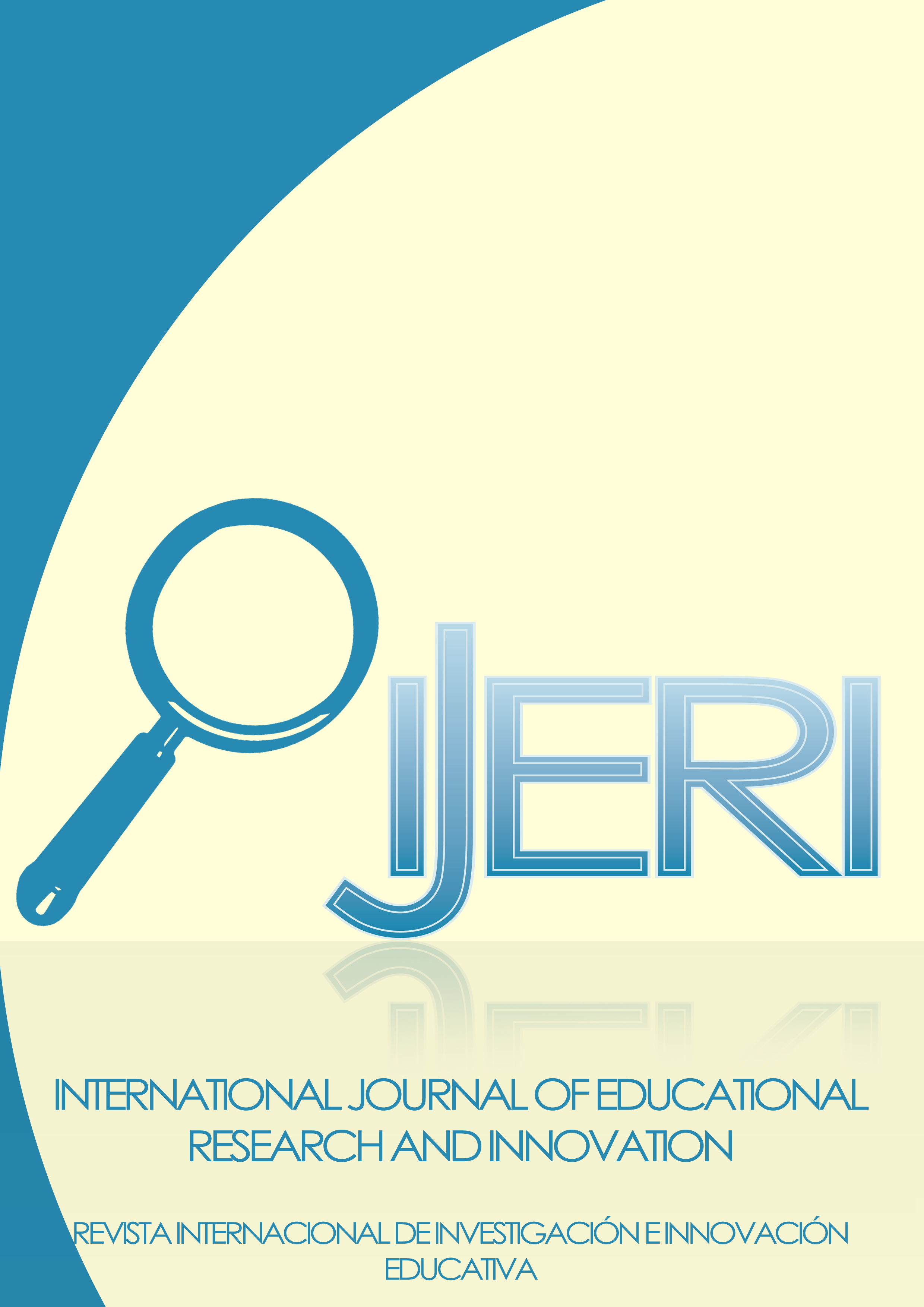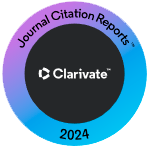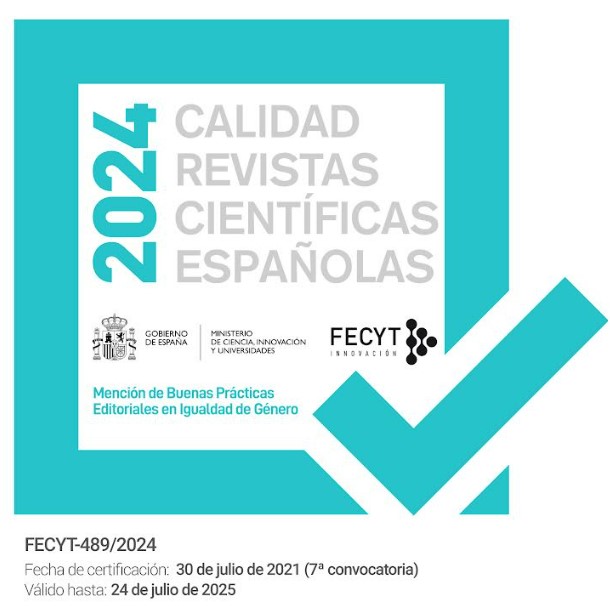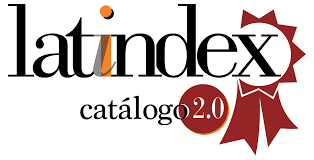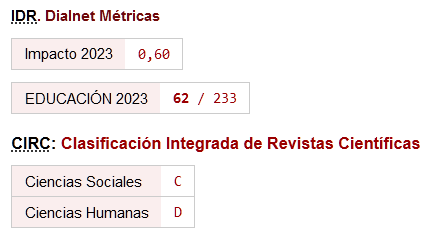Development and validation of a scale to assess the frequency of using classroom assessment tools and methods for mathematics teachers
DOI:
https://doi.org/10.46661/ijeri.8075Keywords:
Mathematics teacher, Classroom assessment, Assessment tools and methods, Scale developmentAbstract
The purpose of this study was to develop a scale to assess the frequency of using classroom assessment tools and methods for mathematics teachers. This study was conducted on 320 Turkish mathematics teachers. The data were analysed using the SPSS 17.0 and LISREL 8.8 statistical software packages. EFA and CFA, item-total correlations, and convergent and discriminant validities were used to assess the construct validity. EFA and item analysis were performed with 170 mathematics teachers. After EFA, a four-factor scale with 25 items was identified, explaining 52.38% of the variance. The CFA was carried out with 150 mathematics teachers. The first and second-order CFA results indicated that the scale model had good fit indices, and the convergent and discriminant validity of the scale was confirmed. The Cronbach's alpha and composite reliability (CR) coefficients were satisfactory. The results of this study showed that the scale is a reliable and valid instrument for assessing the frequency of mathematics teachers’ use of classroom assessment tools and methods.
Downloads
References
Acar-Erdol, T., & Yıldızlı, H. (2018). Classroom assessment practices of teachers in Turkey. International Journal of Instruction, 11(3), 587-602. https://doi.org/10.12973/iji.2018.11340a
Adams, E. L., & Hsu, J. Y. (1998). Classroom assessment: Teachers’ conceptions and practices in mathematics. School Science and Mathematics, 98(4), 174-180. https://doi.org/10.1111/j.1949-8594.1998.tb17413.x
Andersson, C., & Palm, T. (2017). The impact of formative assessment on student achievement: A study of the effects of changes to classroom practice after a comprehensive professional development programme. Learning and Instruction, 49, 92-102. https://doi.org/10.1016/j.learninstruc.2016.12.006
Aras, E. (2020). An examination of secondary school mathematics teachers' approaches, perception of proficiency and their frequency of use about alternative assessment tools and methods (Unpublished Master's thesis). Usak University.
Arnold, J. (2022). Prioritising students in Assessment for Learning: A scoping review of research on students' classroom experience. Review of Education, 10(3), e3366. https://doi.org/10.1002/rev3.3366
Assessment Reform Group (1999). Assessment for learning: Beyond the black box. Cambridge, England: University of Cambridge.
Baas, D., Vermeulen, M., Castelijns, J. Martens, R. & Segers, M. (2020) Portfolios as a tool for AfL and student motivation: are they related? Assessment in Education: Principles, Policy & Practice, 27 (4), 444-462. https://doi.org/10.1080/0969594X.2019.1653824
Birgin, O. (2010). Teachers’ implementation level of assessment and evaluation approaches suggested by 4-5th grade mathematics curricula (Unpublished doctoral dissertation). Karadeniz Technical University.
Birgin, O., & Baki, A. (2009). An investigation of primary school teachers’ proficiency perceptions about measurement and assessment methods: The case of Turkey. Procedia Social and Behavioral Sciences, 1(1), 681-685. https://doi.org/10.1016/j.sbspro.2009.01.119
Birgin, O., & Baki, A. (2012). Investigation of the purposes of the measurement and assessment practice of primary school teachers within the context of the new mathematics curriculum. Education and Science, 5(1), 7-74.
Black, P., & Wiliam, D. (2018). Classroom assessment and pedagogy. Assessment in Education: Principles, Policy & Practice, 25(6), 551-575. https://doi.org/10.1080/0969594X.2018.1441807
Black, P., & Willam, D. (1998). Assessment and classroom learning. Assessment in Education: Principles, Policy & Practice, 5(1), 7-74. https://doi.org/10.1080/0969595980050102
Bol, L., Stephenson, P. L., O'connell, A. A., & Nunnery, J. A. (1998). Influence of experience, grade level, and subject area on teachers' assessment practices. The Journal of Educational Research, 91(6), 323-330. https://doi.org/10.1080/00220679809597562
Büyüktokatlı, N., & Bayraktar, Ş. (2014). Alternative assessment practices in science. Pegem Journal of Education and Instruction, 4(1), 103-126. https://doi.org/10.14527/pegegog.2014.006
Çalışkan, H., & Kaşıkçı, Y. (2010). The application of traditional and alternative assessment and evaluation tools by teachers in social studies. Procedia-Social and Behavioral Sciences, 2(2), 4152-4156. https://doi.org/10.1016/j.sbspro.2010.03.656
Cheng, L., & Sun, Y. (2015). Teachers’ grading decision making: multiple influencing factors and methods. Language Assessment Quarterly, 12, 213-233. https://doi.org/10.1080/15434303.2015.1010726
Cizek, G. J., Fitzgerald, S. M., & Rachor, R. A. (1995). Teachers’ assessment practices: preparation, isolation, and the kitchen sink. Educational Assessment, 3(2), 159-179. https://doi.org/10.1207/s15326977ea0302_3
Clark, I. (2012). Formative assessment: Assessment is for self-regulated learning. Educational Psychology Review, 24(2), 205-249. https://doi.org/10.1007/s10648-011-9191-6
Çokluk, O., Şekercioğlu, G., & Büyüköztürk, Ş. (2012). Sosyal bilimler için çok değişkenli istatistik SPSS ve LISREL uygulamaları [Multivariate statistics SPSS and LISREL applications for social sciences] (2nd Edition). Ankara: Pegem Academy Publishing.
DeLuca, C., Chapman-Chin, A. E. A., Lapointe-Mcewan, D., & Klinger, D. A. (2018). Student perspectives on assessment for learning. The Curriculum Journal, 29(1), 77-94. https://doi.org/10.1080/09585176.2017.1401550
Duncan, C. R., & Noonan. B. (2007). Factors affecting teachers’ grading and assessment practices. Alberta Journal of Educational Research, 53(1), 1-21. https://doi.org/10.11575/ajer.v53i1.55195
Duran, M., Mıhladız, G., & Ballıel, B. (2013). The competency level of elementary school teachers’ towards the alternative assessment methods. Mehmet Akif Ersoy University Journal of the Institute of Educational Sciences, 2(2), 26-37.
Earl, L. M. (2012). Assessment as learning: Using classroom assessment to maximize student learning. Thousand Oaks, CA: Corwin Press.
Field, A. (2005). Discovering statistic using SPSS for Windows (2nd edition). London: Sage Publication.
Fornell, C., & Larcker, D. F. (1981). Evaluating structural equation models with unobservable variables and measurement error. Journal of Marketing Research, 18(1), 39-50. https://doi.org/10.1177/002224378101800104
Fosnot, C. T. (1996). Constructivism: Theory, perspectives, and practice. New York, NY: Teachers College Press.
Gelbal, S., & Kelecioğlu, H. (2007). Teachers’ proficiency perceptions of about the measurement and evaluation techniques and the problems they confront. Hacettepe University Journal of Education, 33, 135-145.
Gök, B., & Şahin, A. E. (2009). The multiple uses of assessment methods in 4th and 5th grades and the competency levels of teachers. Education and Science, 34(153), 127-143. Retrieved from http://egitimvebilim.ted.org.tr/index.php/EB/article/view/579
Hair, J.F., Black, W.C., Babin, B.J., & Anderson, R. E. (2010). Multivariate data analysis (7th Edition). New York: Pearson.
Heritage, M., & Wylie, C. (2018). Reaping the benefits of assessment for learning: Achievement, identity, and equity. ZDM Mathematics Education, 50 (4), 729-741. https://doi.org/10.1007/s11858-018-0943-3
Kingston, N., & Nash, B. (2011). Formative assessment: a meta-analysis and a call for research. Educational Measurement: Issues and Practice, 30(4), 28-37. https://doi.org/10.1111/j.1745-3992.2011.00220.x
Klenowski, V. (2009). Assessment for learning revisited: An Asia-Pacific perspective. Assessment in Education, 16(3), 263-268. https://doi.org/10.1080/09695940903319646
Kline, R. B. (2016). Principles and practice of structural equation modeling (4th edition). New York: The Guilford Press.
Krathwohl, D. R. (2002). A revision of Bloom’s Taxonomy: An overview. Theory Into Practice, 41(4), 212–218. https://doi.org/10.1207/s15430421tip4104_2
Kyaruzi, F., Strijbos, J. W., Ufer, S., & Brown, G. T. (2019). Students’ formative assessment perceptions, feedback use and mathematics performance in secondary schools in Tanzania. Assessment in Education: Principles, Policy & Practice, 26(3), 278-302. https://doi.org/10.1080/0969594X.2019.1593103
Lam, R. (2016). Assessment as learning: Examining a cycle of teaching, learning, and assessment of writing in the portfolio-based classroom. Studies in Higher Education, 41(11), 1900-1917. https://doi.org/10.1080/03075079.2014.999317
McDowell, L., Wakelin, D., Montgomery, C., & King, S. (2011). Does assessment for learning make a difference? The development of a questionnaire to explore the student response. Assessment & Evaluation in Higher Education, 36(7), 749-765. https://doi.org/10.1080/02602938.2010.488792
McMillan, J. H. (2001). Secondary teachers’ classroom assessment and grading practices. Educational Measurement: Issues and Practice, 20(1), 20-32. https://doi.org/10.1111/j.1745-3992.2001.tb00055.x
McMillan, J. H. (2013). Classroom assessment: Principles and practice for effective standards-based instruction (6th edition). New York: Pearson.
McMillan, J. H., Myran, S., & Workman, D. (2002). Elementary teachers’ classroom assessment and grading practices. The Journal of Educational Research, 95(4), 203-213. https://doi.org/10.1080/00220670209596593
Ministry of National Education (MoNE) (2013). Ortaokul matematik dersi (5, 6, 7 ve 8. Sınıflar) öğretim Programı [Middle school mathematics curriculum (5th, 6th, 7th and 8th grades)]. Ankara: MoNE.
Ministry of National Education (MoNE). (2014). Milli Eğitim Bakanlığı okul öncesi eğitim ve ilköğretim kurumları yönetmeliği [Ministry of National Education regulation on pre-school education and primary education institutions]. Ankara: MoNE.
Ministry of National Education (MoNE). (2018). Matematik dersi öğretim programı (İlkokul ve ortaokul 1-8. Sınıflar) [Primary school mathematics curriculum (1st-8th grade)]. Ankara: MoNE.
Mullis, I. V. S., Martin, M. O., & Hooper, M. (2016). 20 years of TIMSS international trends in mathematics and science achievement, curriculum, and instruction. TIMSS & PIRLS International Study Cente, and IEA.
National Council of Teachers of Mathematics (NCTM) (2000). Principles and standards for school mathematics. Reston, VA: Author.
National Council of Teachers of Mathematics (NCTM) (2020). Standards for the Preparation of Secondary Mathematics Teachers. Reston, VA: Author.
Nazlıçiçek, N., & Akarsu, F. (2008). Physics, chemistry and mathematics teachers’ approaches to assessment tools and their assessment practices. Education and Science 33(149), 18-29.
Özenç, M., & Çakır, M. (2015). Exploring primary school teachers’ competencies of alternative assessment and evaluation. Elementary Education Online, 14(3), 914-933. http://dx.doi.org/10.17051/io.2015.22900
Peker, M., & Gülle, M. (2011). Mathematics teachers’ level of knowing about the measurement tools in new elementary school mathematics teaching program and their frequency of use. Elementary Education Online, 10(2), 703-716.
Randall, J., & Engelhard, G. (2010). Examining the grading practices of teachers. Teaching and Teacher Education, 26(7), 1372-1380. https://doi.org/10.1016/j.tate.2010.03.008
Sadeghi, K., & Rahmati, T. (2017). Integrating assessment as, for, and of learning in a large-scale exam preparation course. Assessing Writing, 34, 50-61. https://doi.org/10.1016/j.asw.2017.09.003
Schellekens, L. H., Bok, H. G., de Jong, L. H., van der Schaaf, M. F., Kremer, W. D., & van der Vleuten, C. P. (2021). A scoping review on the notions of Assessment as Learning (AaL), Assessment for Learning (AfL), and Assessment of Learning (AoL). Studies in Educational Evaluation, 71, 101094. https://doi.org/10.1016/j.stueduc.2021.101094
Schermelleh-Engel, K., Moosbrugger, H., & Müller, H. (2003). Evaluating the fit of structural equation models: Tests of significance and descriptive goodness-of-fit measures. Methods of Psychological Research Online, 8(2), 23-74.
Shepard, L. A. (2000). The role of assessment in a learning culture. Educational Researcher, 29(7), 4-14. https://doi.org/10.3102/0013189X029007004
Stiggins, R. J. (1997). Student-centered classroom assessment (2nd ed.). Upper Saddle River, NJ: Prentice-Hall
Sun, Y., & Cheng, L. (2014). Teachers’ grading practices: Meaning and values assigned. Assessment in Education: Principles, Policy & Practice, 21(3), 326-343. https://doi.org/10.1080/0969594X.2013.768207
Tabachnick, B. G., & Fidell, L. S. (2007). Using multivariate statistics (5th ed.). New York: Allyn & Bacon/Pearson Education.
Wiliam, D. (2011). What is assessment for learning? Studies in Educational Evaluation, 37, 3-14. http://dx.doi.org/10.1016/j.stueduc.2011.03.001
Yazıcı, F., & Sözbilir, M. (2014). Elementary 6-8 grades teachers' frequency of use and their level of adequacy in assessment and evaluation methods: Erzurum sampling. Necatibey Faculty of Education, Electronic Journal of Science and Mathematics Education, 8(2), 164-197. https://doi.org/10.17522/nefefmed.65358
Yıldırım Ekinci, H., & Köksal, E. A. (2011). Development of elementary science and mathematıcs teachers' competence in measurement and evaluation scale. Kastamonu Education Journal, 19, 167-184. Retrieved from https://dergipark.org.tr/tr/pub/kefdergi/issue/49053/625830
Yıldızlı, H. (2020). Classroom assessment practices and student goal orientations in mathematics classes. Journal of Qualitative Research in Education, 8(1), 294-323. https://doi.org/10.14689/issn.2148-2624.1.8c.1s.13m
Zhang, Z., & Burry-Stock, J. A. (2003). Classroom assessment practices and teachers' self-perceived assessment skills. Applied Measurement in Education, 16(4), 323-342. https://doi.org/10.1207/S15324818AME1604_4
Published
How to Cite
Issue
Section
License
Copyright (c) 2023 Osman Birgin, Murat Yılmaz

This work is licensed under a Creative Commons Attribution-NonCommercial-NoDerivatives 4.0 International License.

